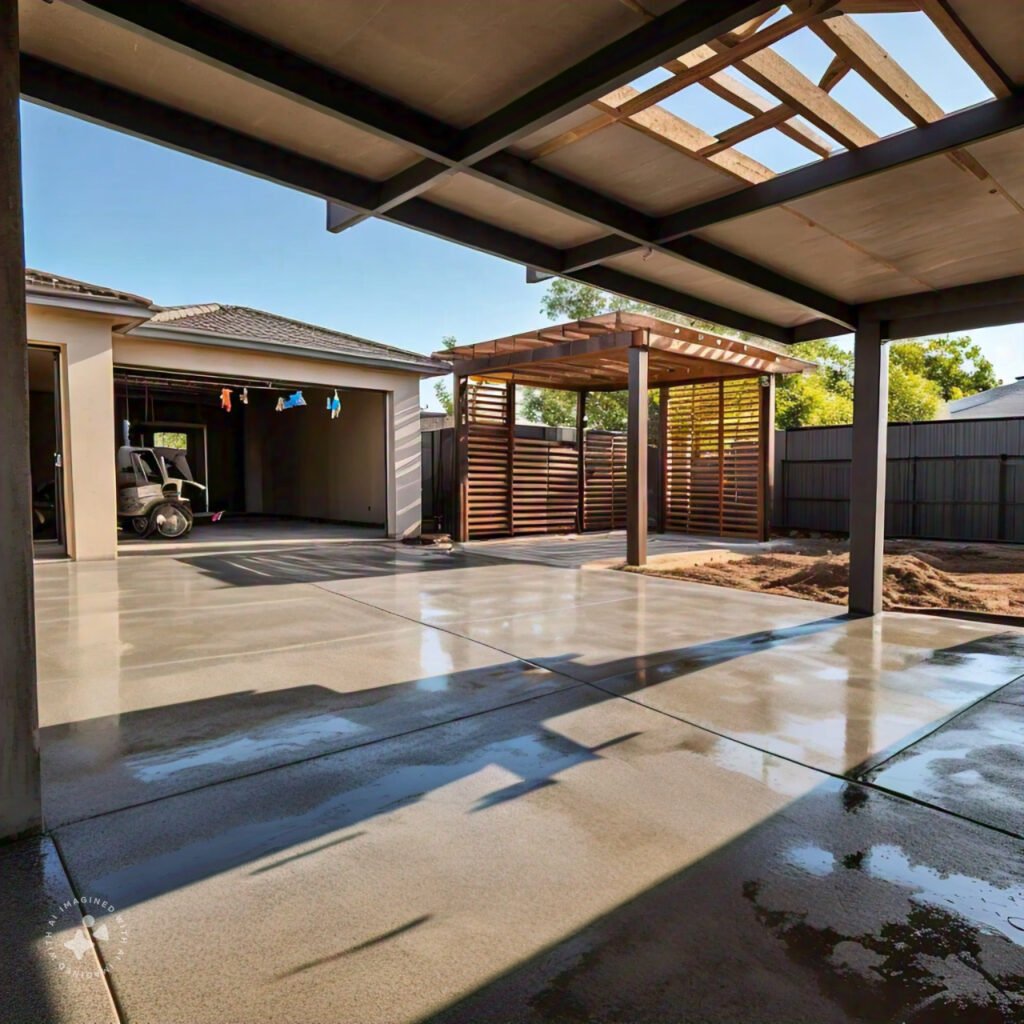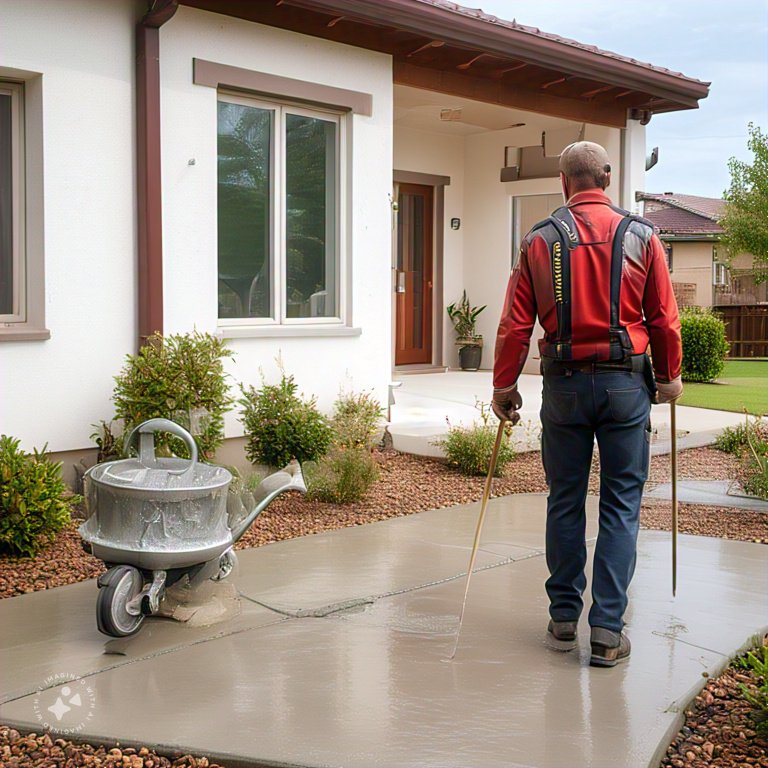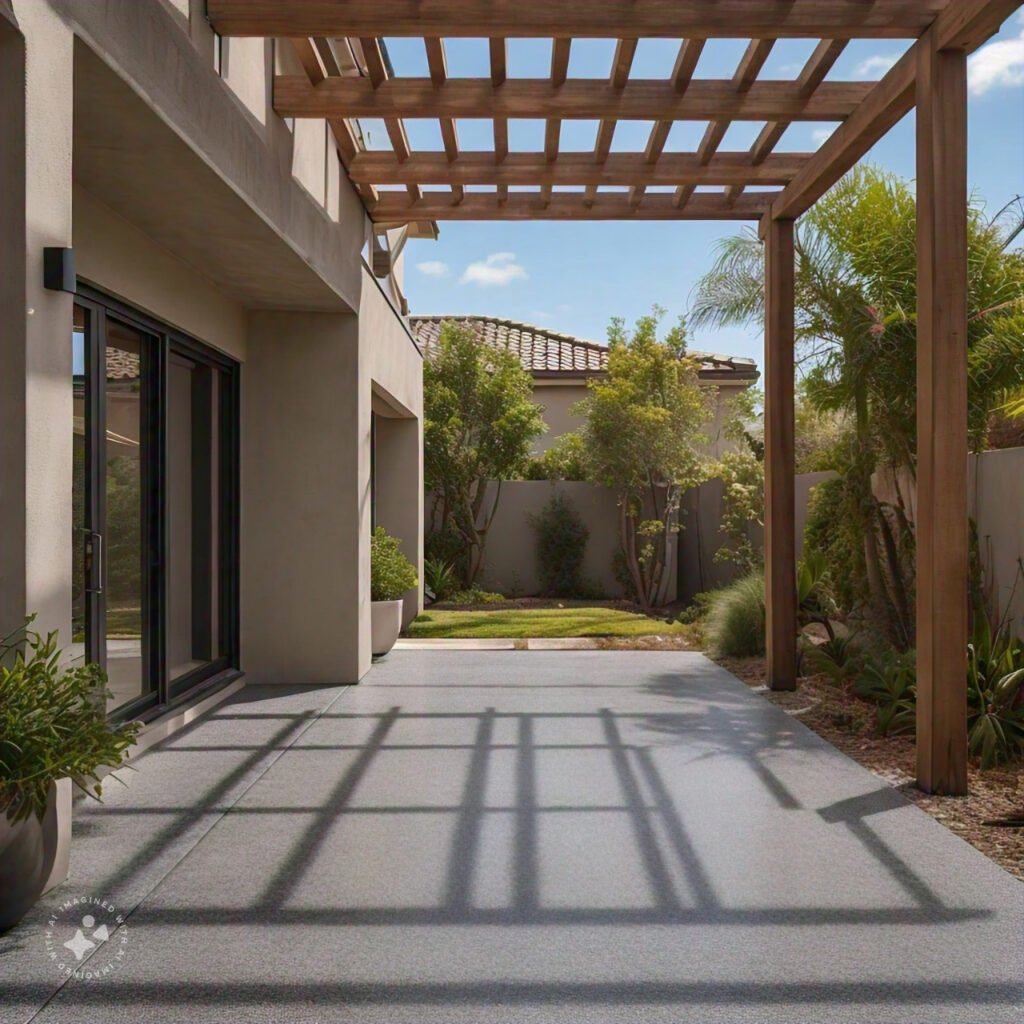Contents:
- What Is a Patio Cover?
- What Is a Pergola?
- Pros and Cons of Patio Covers
- Also, read
- Pros and cons of Pergolas
- Pergola vs covered patio: Which Is Better in Texas?
- The Foundation Is the Most Important Part of the Structure
What is a Patio Cover?
A patio cover is a structure that is attached directly to another structure, like your home. The key distinction that makes it different from outdoor structures is that it has a roof. The roof could be an extension of your home or it can have its own style of roof that is arched or flat.
Another key feature of patio coverings is that they can be left open on three sides or have one or two sides enclosed with one left open. Some patio design ideas also feature sliding doors on the side normally left open, so you could close them during inclement or cold weather and still enjoy the use of the outdoor space.
What is a Pergola?
A pergola is a detached structure that is freestanding. It can be installed over a patio, walkway, driveway, part of a pool deck, or even in the middle of your yard. Unlike a patio cover, pergolas have an open top that provides you with partial shade and do not have an actual roof. However, some homeowners do opt for a special style of pergola that can be attached and secured to the side of the home.
Pros and Cons of Patio Covers
Installing a patio cover can significantly enhance your outdoor living space, providing both benefits and drawbacks. On the positive side, patio covers offer valuable protection from the elements, allowing you to enjoy your patio regardless of weather conditions. This can extend the usability of your outdoor area, providing shade on hot days and shelter during rain. Additionally, patio covers can add aesthetic appeal to your home’s exterior and potentially increase property value. Many options are available, from wood to aluminum, that can be tailored to match your home’s design.
However, there are also some cons to consider. Installing a patio cover can be costly, depending on the materials and design chosen. Some types of patio covers require significant maintenance, especially wooden ones, which need regular staining or painting to prevent weather damage. Moreover, fixed patio covers may reduce the amount of natural light entering adjacent indoor spaces, and poorly designed covers can detract from the overall look of your home if they do not complement its style.
Also, read:
- How Building Materials have evolved over Time
- How Long Should You Wait Before Sealing Your Concrete Driveway?
- The Role Of Calcium Chloride In Concrete
- Why is building concrete driveways the better choice in hot climates
- How Concrete Floors Can Benefit Your Business
Pros and cons of Pergolas
Pergolas are popular garden structures that bring both charm and functionality to outdoor spaces, but they come with their own set of pros and cons. One of the major advantages of pergolas is their aesthetic appeal; they can dramatically enhance the visual interest of a garden or backyard. Pergolas provide a defined space for outdoor dining or relaxation and can be adorned with climbing plants, creating a natural, serene environment. Additionally, they offer a balance of sunlight and shade, making them ideal for those who enjoy spending time outdoors without full exposure to the sun.
However, pergolas also have some disadvantages. Unlike solid patio covers, pergolas provide limited protection from the elements; their open lattice roofs offer shade but won’t keep out rain or snow. This makes them less functional in adverse weather conditions. In terms of maintenance, pergolas typically require periodic care, especially if made from wood, which may need treatment to prevent rot, warping, or pest infestation. Lastly, pergolas can be relatively expensive to install, particularly if opting for custom designs or high-quality materials.
Pergola vs. covered patio: which is better in Texas?
We all know Texas can and does have hot, sweltering summers. So if you want a structure that is easy to maintain, patio covers would be best. If you want partial shade or the ability to build a structure that is not attached to your home, then pergolas could be the best choice.
It comes down to your personal preferences and how often you like spending time outdoors relaxing, eating, or visiting with friends.
If you are “on the fence,” we recommend checking out what other homeowners in your neighborhood have done and asking them what they like and dislike about their pergola or patio cover.
Some people also opt for what is known as a “free-standing patio cover.” This type of structure is essentially a patio cover, but it is not secured to the home. Rather, it is built as a separate structure and set permanently in place.
For instance, you may have an outdoor kitchen next to your pool deck that is not covered and not near your home, but you still want it covered with a roof. In this case, building a free-standing patio cover would be an ideal solution.
The Foundation Is the Most Important Part of the Structure
No matter whether you want to add a patio cover or a pergola to your home, the foundation is the most vital part of the structure. A solid concrete patio underneath the patio cover or pergola will provide decent support for the structure once it is built.
Each of the support posts of the structure should also be set into concrete to ensure they remain firmly in place on the ground and do not sink. Otherwise, without concrete supports, you could see your patio cover starting to sag or your pergola leaning to one side or the other in a really bad rainy season.
Fortunately, you are no longer stuck with basic gray-colored cement. There are all sorts of colors and designs you can choose from to put your personal touches on the foundation. There are swirled “marble-style” finishes, solid colors, and more to choose from. There are even paintable concrete finishes you can use over the actual foundation to give you even more flexibility if you like to change colors regularly.
Some people also use raised outdoor patio tiles that they place directly over the foundation once the structure has been built. One of the benefits of patio tiles is that you can choose from wood, composites, and other such materials to give your outdoor areas a more natural look and feel.
To learn more about different cement foundation options and colors or to get help with patio designing and building coverings or pergolas, please feel free to contact Cross Construction Services at 713-254-1703 today!
Not only are we concrete experts when it comes to driveways, sidewalks, walkways, and patios, but we are also experienced in building stunning outdoor structures!


